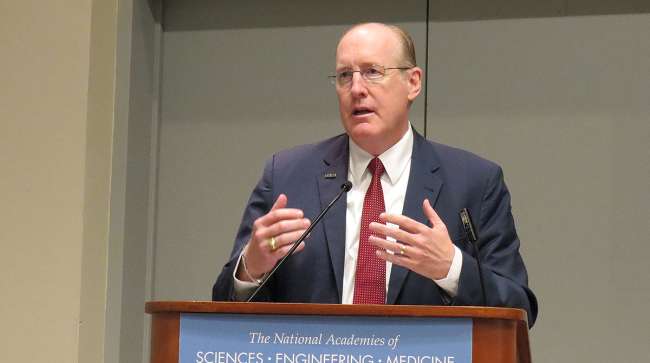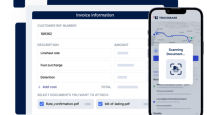Staff Reporter
Data Sharing Can Help Freight Movement, Panelists Say

[Stay on top of transportation news: Get TTNews in your inbox.]
WASHINGTON — Coordination among trucks, ports, departments of transportation, city representatives and law enforcement officers is important to facilitating mobility, according to John Barton, senior vice president of the infrastructure firm HNTB Corp.
Barton, who spoke at the Transportation Research Board’s annual meeting Jan. 14, emphasized the importance of sharing data that is collected from different sectors of the transportation industry.
“There’s great opportunity for all of us who are part of this ecosystem,” Barton said. “It’s critical that we start to take advantage of all this data that’s being collected.”
More From TRB
Keith Wine, managing principal of Meritage Point Consulting, said data transmitted to truck drivers can inform them about ongoing road work or other issues they may encounter on their hauls. He said sharing data can help prevent situations where trucks get on routes they should avoid, such as bridges that can’t accommodate them. Wine represents the technology company Intelligent Imaging Systems Inc. and the screening service Drivewyze.
Edward McCarthy, chief operating officer of the Georgia Ports Authority, said the port has had success in a data partnership with the Georgia Institute of Technology to study the arrival of big ships, which tends to happen in ripples. For example, he said the port will see four days without big ship activity and then will have 15,000 containers dropped in the span of two days.
The Arizona Department of Transportation has practiced disseminating data to truckers regarding parking availability along Interstate 10, which stretches across the southern part of the country, running from Santa Monica, Calif., to Jacksonville, Fla. The key east-west route links California, Arizona, New Mexico and Texas.

Gregory Byres by Eleanor Lamb/Transport Topics
Arizona, California, New Mexico and Texas — as well as the I-10 Corridor Coalition, which promotes safety for commercial and passenger vehicles — have formed a partnership for the truck parking availability system project. Gregory Byres, director of the Arizona Department of Transportation’s Multimodal Planning Division, noted that many truckers find themselves looking for parking in Arizona because of the state’s distance from the Port of Long Beach.
“In Arizona, we have very limited parking for trucks,” Byres said. “We wind up with trucks stacked up and down our ramps, which is not good for safety.”
Byres said one challenge Arizona faces is rapid growth, particularly in Maricopa County, which covers the Phoenix metropolitan area. Accompanying this growth is a strong freight industry, facilitated in part by large warehousing complexes near Phoenix and an inland port in Tucson. Trade from Mexico, including vegetables for U.S. consumers, also flows through the area.
“We have tremendous growth that’s occurring,” Byres said. “That amount of freight coming through has really stretched our systems.”
As transportation leaders embrace data sharing and other technological advancements, Dan Murray, senior vice president of the American Transportation Research Institute, encouraged listeners to pay attention to issues such as insurance, litigation and connectivity.
“We have got to work on things that are boring,” Murray said.
Murray’s remarks took place one day after ATRI issued analysis on the role of government activities in automated trucking. The analysis encourages the Department of Transportation to promulgate legislation listing recommended practices for states and municipalities, many of which have been active in the testing and deployment of AV technology.
Want more news? Listen to today's daily briefing:



